Distribution of Orbital Distance
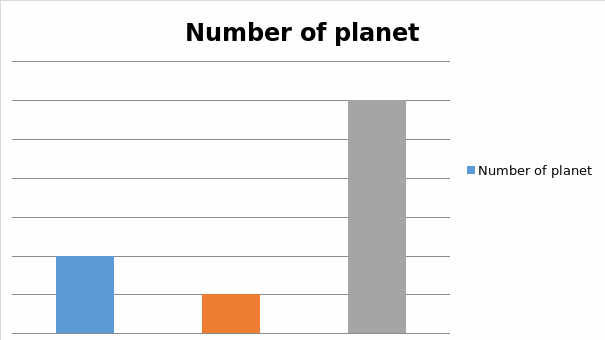
Title: Distribution of Orbital Distance: Number of Planets Closer and Farther than Earth’s Orbital Distance
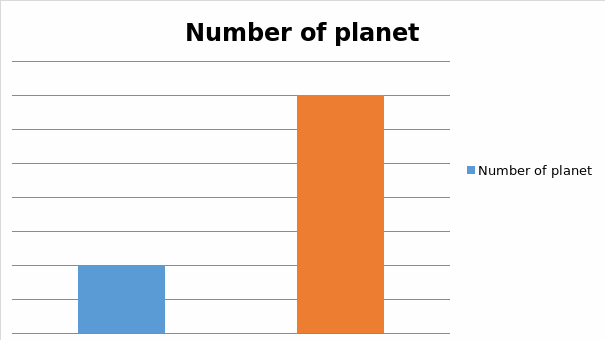
Title: Distribution of Masses: Number of Planets with Masses Less than Earth’s Mass and Greater than Earth’s Mass

Title: Distribution of Orbital Periods: P < PEarth; PEarth ≤ PERIOD ≤ PJupiter; P > PJupiter

Distance (AU) vs. Period (Years) for Planets Closer than Jupiter (not including Jupiter)
(Vertical Y-axis Distance versus Horizontal X-axis Period)
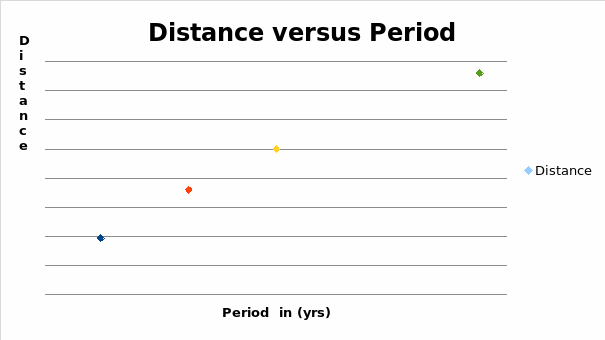
Title: Distance (AU) vs. Period (Years) for Planets With Orbits Jupiter-sized and larger
(Vertical Y-axis Distance versus Horizontal X-axis Period)
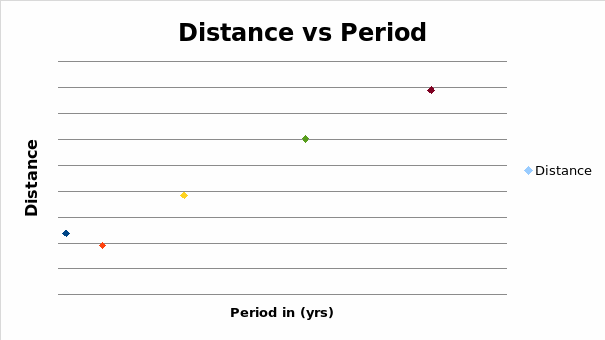
Title: Distance (AU) vs. Mass (MEarth) for all Solar System Planets
(Vertical Y-axis Distance versus Horizontal X-axis Mass)
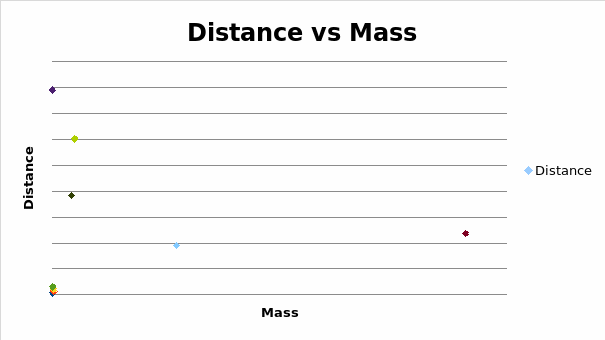
Explanation of why which graph is which
Given the two types of graphs, though there is no authentic experimental method of determining the specific graph for each pair of variables, it is quite possible to deduce a suggestion for each pair by critical focusing on the given variable characteristic or nature. For a given pair of variables to produce certain pattern which reflects their correlation, the sets of variables should have at least a common feature which is relevant to the kind of measurement being taken. In this case, the first graph A correlating intelligence versus height is believed to be the one because the points of the paired variables are randomly distributed, hence depicting a pattern which is inconsistent. This inconsistency is expected as there is lack of an underlying common factor. The variable of intelligence is an abstract in nature while the variable of height is physical, thus, increasing either of the two is likely to have no impact or if there is any impact/effect, this would be quite inconsistent. Graph labeled B is expected to be the one showing correlation of height versus height because the two variables are considered to be physical in nature, and mostly any change in one would affect the other. To increase or decrease the height of an object, materials should be added or subtracted. It is also noted that the same happen when one wants to change the mass/weight of the object, which means there is a mutual association of the two variables leading to production of a linear graph depicting a positive or negative correlation of the variables.
In comparison of the correlations of period and mass to distance, period seems to be more highly correlated to distance than it is with mass. From the various correlation sketch graphs drawn above, it is observed that when a change is effected in either period or distance, a corresponding change effect of increase or decrease is detected in both. The period-distance correlation graphs, they have their points lying exactly to a central axis except one point which is a bit off but also close to the central axis, hence, giving a picture of forming a linear pattern, which strongly gives an indication of mutual association or correlation. The sketches of distance-mass graphs, the points are randomly distributed with each point lying far away from a central line axis, thus, showing lack of mutual association leading to having a correlation.
Most recently Discovered/updated planet
- Name: GJ 667C
- Mass: 0.0134
- Period: 28.13
- Semi-Major Axis Length: 0.1251
Is this planet more massive than Earth? Highlight or underline one:
- Yes
- No
If so, how many times more massive? 0.1221
Histograms With Planet SEM Maj Axis as Reference
Histograms With Planet Period as Reference
For the student’s generalization statement “Most extra-solar planets discovered take about the same length of time to orbit their star as Earth takes to orbit our Sun,” I would like stand opposing to it. As we know, the Earth period to orbit the sun is 365 days, and therefore, the student’s statement would be correct when we find that many extra-solar planets have their periods at or close to 365 days. On investigating the entire extra-solar planetary grid, I established that no extra-solar planets with period coinciding that of the earth of 365 days, while taking ranges of +-5, +-10, and +-15 days about earth’s period, the extra-solar planets found were 2, 6, and 9 respectively. This tallying was very low when compared to other range of periods, for instance period of 0 to 5 days had 191 extra-solar planets.
Evidence- based Conclusion
From the study, we conclude that extra-solar planets orbital periods and their orbits are in most cases related such that a change in either of the two would have a change effects on the other. That is an increase or decrease of one would cause similar changes on the other but the changes might be varied in measure. As their graph is almost linear with just a few points lying a bit far away from a central line axis, we find the two variables to be closely related, meaning they have a positive correlation as shown in the sketch graph below.
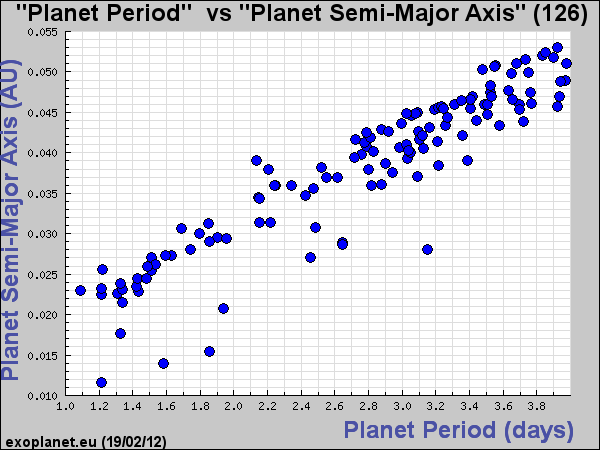
Step-by-step description of determining orbit of newly discovered extra-solar planet:
- Open the interactive extra-solar planet catalog
- Click on the correlation diagrams button
- Select the horizontal X-axis as planet period
- Select the Y-axis to be planet semi-major axis
- Choose linear scale radio buttons for both planet and planet semi-major axis
- Set the planet period minimum at zero and maximum to be 22 days.
- Click on the execution button ‘OK’ to create a correlation graph
- Using the given planet period value (21), follow it up its specific/ particular point it makes on the graph grid.
Read the value on the Y-axis of the point, which is the value representing the planet semi-major axis. From the sketch below, this value is 0.16
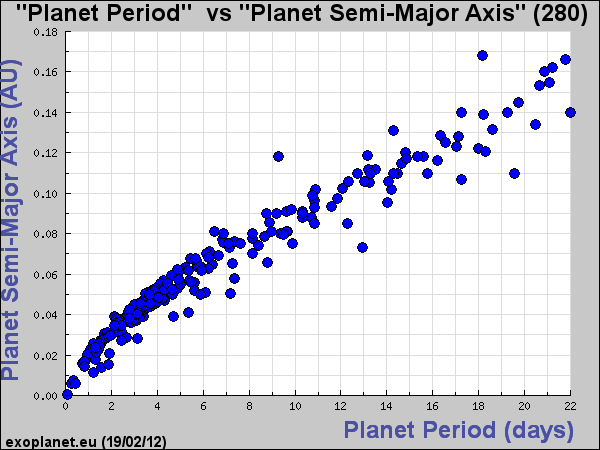
Specific Research Question
Astronomers having recently discovered an extra-solar planet which they have named it as MOA-2011-BLG-293L, they have established that it has a mass of 2.4 Mj and it a unit distance away from the sun as the earth planet. However, with all this information revealed, its period remains unknown, and therefore, the major question to all astronomers remain to be: is the period of MOA-2011-BLG-293L planet the same (365 days) as that of earth planet or they differ due to difference of their masses?
Step-by-Step Procedure, with Sketches if Needed, to Collect Evidence:
- Open the interactive extra-solar planet catalog
- Click on the correlation diagrams button
- Select the horizontal X-axis as planet mass
- Select the Y-axis to be planet period
- Choose linear scale radio buttons for both planet and planet semi-major axis
- Set the planet mass minimum at zero and maximum to be 5 Mj.
- Click on the execution button ‘OK’ to create a correlation graph
- Using the given planet period mass (2.4), follow it up its specific/ particular point it makes on the graph grid.
- Read the value on the Y-axis of the point, which is the value representing the planet period.
Evidence-based Conclusion Statement
Summary
The universe has numerous extra-solar planets which have been discovered in the recent time. Some of these extra-solar planets have similar characteristic features to those of the major known nine planets orbiting around the sun. However, they also portray differences of mass, period and other features which well investigated/ studied through different methods